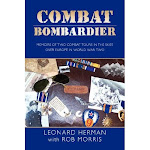 My friend Dan Culler sent me some photos today taken at a military cemetery in England. I have talked with many vets who have gone to these American cemeteries, and they are always impressed by how carefully and lovingly they are kept by the English. Each is a sobering place, certain to fill visitors with an appreciation of the sacrifices of Americans fighting from English soil.
My friend Dan Culler sent me some photos today taken at a military cemetery in England. I have talked with many vets who have gone to these American cemeteries, and they are always impressed by how carefully and lovingly they are kept by the English. Each is a sobering place, certain to fill visitors with an appreciation of the sacrifices of Americans fighting from English soil.One of the biggest of the English cemeteries is at Cambridge, England. It was established on December 7, 1941 on roughly 30 acres of land donated by the University of Cambridge. The site was chosen because it was beautiful, and also because many of the American casualties in England happened in the East Anglia area, due to the concentration of air bases.
I have lifted the following quote from the cemetery's official website at http://www.gwydir.demon.co.uk/cambridgeuk/madcem.htm
"The base of the 72-foot flagpole in front of the Visitors' Building carries an inscription taken from John McCrae's poem - In Flanders Fields, "...To You From Failing Hands We Throw The Torch - Be Yours To Hold It High." From a point at the northern edge of the flagpole platform, one notices the headstones are aligned like the spokes of a wheel. The excellent view makes this feature the focal point of the cemetery.
From here the Great Mall, its reflecting pools bordered by polyantha roses, stretches eastward to the Memorial. The Wall of the Missing, 472 feet in length, of Portland limestone quarried in southern England, records the names and particulars of 5,125 of our Missing, who made the ultimate sacrifice for freedom, but whose remains were either never recovered or positively identified. Above the names is an extract from President Eisenhower's dedication enshrined in St. Paul's Cathedral, London. Along the Wall are four statues representing a Soldier, a Sailor, an Airman and a Coast Guard in their typical uniforms and weapons. The paving is of English York sandstone.
The Memorial, like the great Wall, is built of Portland stone. On the north face of the Memorial are five pylons each inscribed with a date recalling the five years from 1941 through 1945 in which the United States participated in the war. The main doors are of teakwood, and bear the bronze models of military equipment and naval vessels. The interior of the Memorial is divided into the large museum chamber, and the smaller devotional chapel.
The mosaic ceiling, by American artist, Francis Scott Bradford, is a memorial to those Americans who gave their lives while serving in the U.S. Army Air Force. The ghostly aircraft, accompanied by mourning angels, make their final flight toward Glory.
The 3,812 American War Dead, represent 42 percent of those temporarily buried in England and Northern Ireland. A large portion were members of the United States Army Air Corps. The burials in the fan-shaped graves area are arranged in seven curved grave plots A-G. The headstones within the plots are aligned in seven rows of concentric arcs whose wide sweep across the green lawns may best be viewed from the Great Mall near the Memorial. Isolated tulip trees, catalpa, beech, oak and liquidambar (sweetgum) grow within the grave plots.
Twenty-four of the headstones mark the graves of 'Unknowns', whose remains could not be positively identified. Two headstones represent burials of two and three men, respectively, whose names were known, however, their remains could not be separately identified. Bronze tablets, over these graves, record their names. While Stars of David mark the graves of those who professed the Jewish faith, Latin crosses mark all others.
I plan to go to England next spring, and will make an effort to visit and leave flowers and prayers.







No comments:
Post a Comment